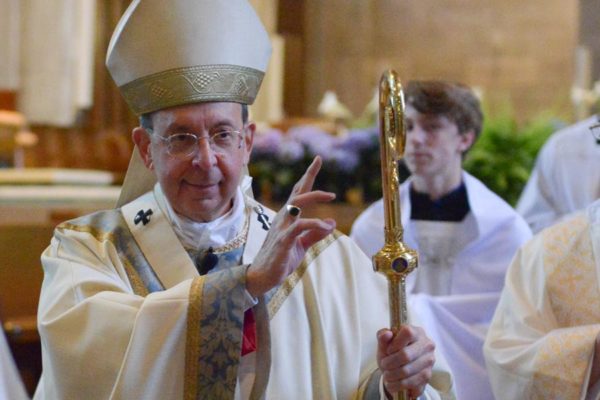Tuesday of the 23rd Week in Ordinary Time
September 6, 2022
National Conference of Vocations Directors
St. Mary Seminary
First, I would like to welcome you to the City of Baltimore and to the Archdiocese of Baltimore, the Premier See, the first to be established after the birth of the United States of America. Let me welcome you as well to the nation’s oldest seminary, St. Mary’s, and by extension, to the nation’s second oldest seminary, Mt. St. Mary’s. I am delighted you are here and that you will be at tonight’s Orioles game. With you rooting for the Orioles, I have no doubt that we’ll win! I only wish you had come earlier. We might have had a shot at the wild card!
Vespers is not the place for a long homily even when celebrated solemnly. So let me simply share with you a page from our history that epitomizes the courage needed for the ministry of fostering priestly vocations.
When, in 1789, Pope Pius VI established Baltimore as the nation’s first see, he appointed Father John Carroll as its first bishop. Surveying his territory, then-Bishop Carroll must have wondered how he would serve a diocese that stretched as far north as Canada, as far south as Florida, and as far west as the Mississippi River. Among his clergy, some were noble and talented priests while others who proved to be more difficult to deal with. What’s more, John Carroll did not have a single, solitary seminarian, not one.
What did he do? He could have said, “The ground here isn’t fertile for vocations.” Or, he could have said, “We’re a small religious minority incapable of generating our own vocations.” He did neither. Instead, he got on a boat and went to Paris where he invited the Suplicians to come America to establish a seminary, our nation’s first, St. Mary’s Seminary established in 1791. By the time John Carroll died in 1815, there were two seminaries in his Archdiocese. Mount Saint Mary’s Seminary was founded in 1808. Today, both seminaries are flourishing.
John Carroll’s decision to open a seminary when as yet he had no seminarians was more than gutsy. It demonstrated courageous trust in Divine Providence, a deep-seated belief that God’s grace and gifts are abundant and that he would raise up a new generation of priests from American soil. By the time he passed on, John Carroll had put in place the foundations for the growth of the diocesan priesthood in the United States.
I mention this because, as they say, we live in interesting times. Granted, times have changed and changed drastically since the waning years of the 18th century. Today, our vocational headwinds are very different than the ones which John Carroll and his collaborators faced. But we need to have the same courage, the same trust in Divine Providence, the same confidence that God will raise up new generations of priests for the service of his people and for the evangelization of the culture in which we live.
I am delighted that you came here to Baltimore to discern how best to carry forward your ministry, so important for the life of the Church, and pray your deliberations, emboldened by trust in God’s providential love, will bear fruit in abundance for the Church in the United States and for the dioceses which each of you represent. Welcome!


